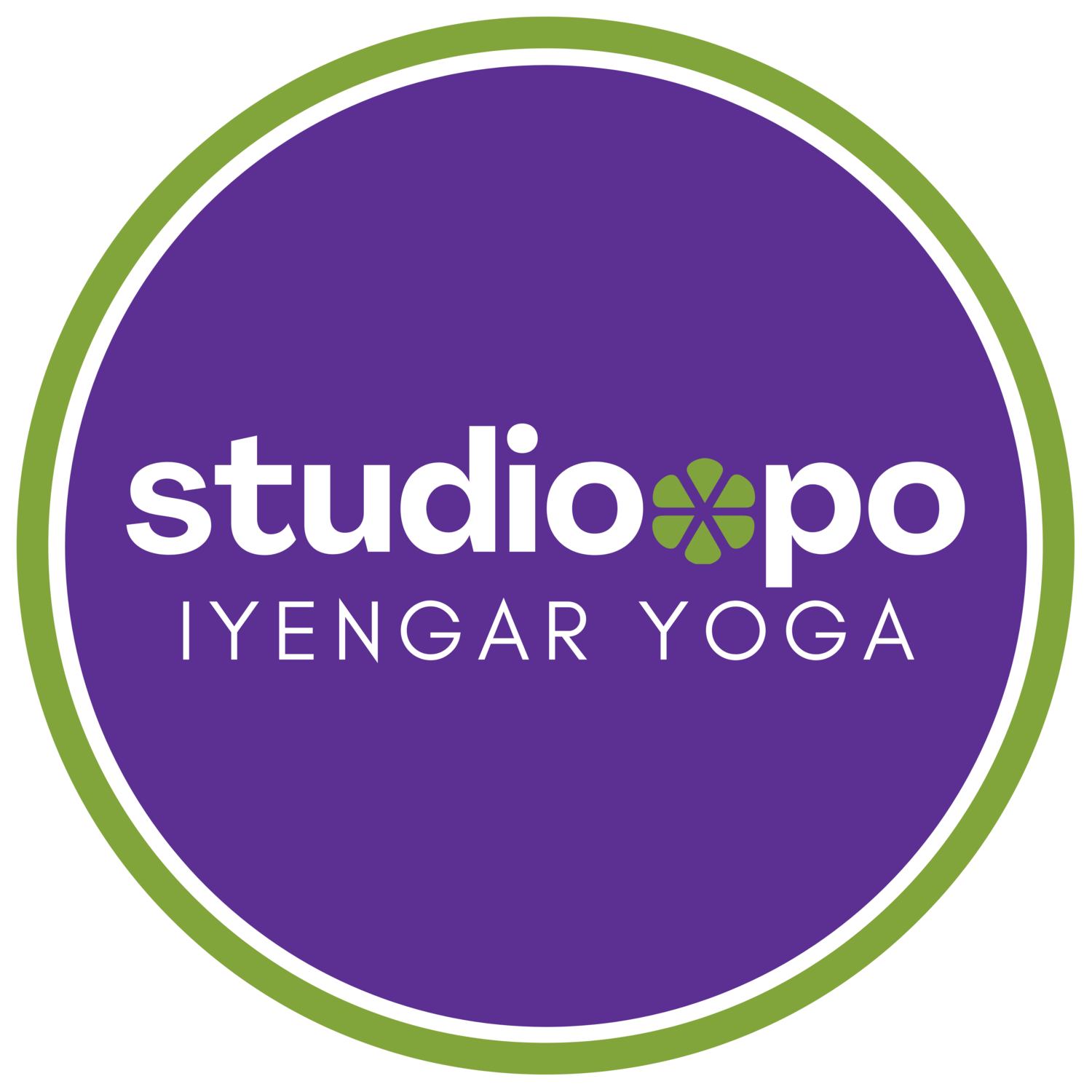Beginner or Advanced?
Published on October 30, 2015
BKS Iyengar developed a series of syllabi and instructed the founding members of the Iyengar Yoga Association of Canada to follow these syllabi when training and ultimately certifying new teachers. I recently had the privilege (and rich learning experience!) of successfully completing my Intermediate Junior 2 (IJ2) assessment. What I enjoy about the assessment process is that it provides a framework within which to delve deeper into my practice and teaching. It gives me permission to explore new asanas and an opportunity to forge ahead in a thoughtful and meaningful way.
To prepare for my IJ2 assessment, I, of course, taught the poses on the IJ2 syllabus. However, I teach a lot of lower level classes. In those classes, I instead focused on teaching the preparatory poses – the actions that ultimately, one day, would prepare these students to do the more advanced IJ2 asanas. In doing so, I had a thought… in a way, I felt I was teaching my lower level students advanced yoga, and my more advanced students, beginner yoga. These lower level students were being given an opportunity to deconstruct and reconstruct their understanding of basic asanas. They were approaching familiar asanas from a new perspective and (hopefully) garnering new awareness as a result. On the other hand, my more advanced students were trying new poses, many for the first time, which is certainly fun (and fun is important, even in yoga!), but for the most part, they were taking only the very basic shape of the pose. The challenge of putting the physical body into the general shape of the asana was great enough, that there really wasn’t much opportunity for refinements or nuance, and certainly not for the inward focus or quietude that comes from a fully engaged yoga practice.
This got me thinking about what actually constitutes an ‘advanced yoga practice’. Does advanced mean handstanding in the middle of the room? Does it mean contorting yourself into unusual shapes and balancing on your arms? If the images that grace the covers of yoga publications and social media are any indication, you might think the answer is yes. Personally, I don’t think asanas themselves are inherently beginner or advanced. A ‘beginner’ pose can be done with advanced understanding, and a so-called ‘advanced’ pose can be done with very primitive understanding. Sure, some asanas are more challenging than others and granted it would serve you well, for example, to have experience with Adho Mukha Svanasana before attempting Adho Mukha Vrksasana. But, I don’t believe that means Adho Mukha Svanasana is a beginner pose.
Okay, so why the rant?!?! I guess it’s time I confess… I am suffering from over exposure to yoga selfies. There, I said it. As someone who is engaged in the yoga community, I feel almost bombarded by yoga selfies. In today’s day and age, yoga selfies are clearly the norm. Sadly, in my experience, more often than not, the images I see either:
portray scantily clad individuals performing acrobatic interpretations of asanas; or
portray ‘accidents waiting to happen’. People with varying body types aspiring to practice acrobatic interpretations of asanas, and doing so without (seemingly having) the knowledge to do so safely.
It upsets me to see these images and think this is what the world understands ‘yoga’ to be. There is nothing yogic about posing for a camera. There is nothing yogic about craving ‘likes’ and ‘comments’.
Now of course, there is a flip side, and as with everything, nothing is black and white. There are also photographs of beautifully executed asanas. There are photographs that capture the unique ‘a-ha!’ moments between a teacher and a student. There are photographs that capture a student’s genuine progress. There is also real value to online community, sharing information, motivating one another to practice, to study, and to engage. So hence, my philosophical dilemma. I myself have engaged in the occasional yoga selfie. I have also encouraged yoga selfies as a marketing tool in hopes of encouraging home practice amongst my students. So where’s that line between appropriate and inappropriate? Or am I just a ripe example of a double standard?
I don’t have a good answer. I will say though that as I cultivate my own online presence, I feel a deep sense of responsibility to pay tribute to the integrity of BKS Iyengar’s teaching. For me, this translates into a commitment to accurately portray classical asanas, to share tips, hints, & real examples of inherent struggles, to motivate others to practice, & to highlight that yoga can be accessible to all.
“The study of asana is not about mastering posture. It’s about using posture to understand and transform yourself.” – BKS Iyengar
Sometimes when I’m teaching, I have these moments of being almost beside myself listening, and I’ve wondered..are my words clear enough, my touch effective enough, my presentations engaging enough? If BKS Iyengar himself had been present in the room, would I have said or done things differently? Reflecting in this manner, I feel, keeps me honest. It allows me to continuously pay homage to the man whose brilliant work has transformed me in more ways than words can express.
As a certified teacher, I do feel I’m an ambassador of Iyengar Yoga, and this holds true whether I’m teaching a class, engaged in a random yoga discussion with a stranger, or presenting information online… if BKS Iyengar was looking over my shoulder, would I still hit ‘post’??? I’m thinking I’m going to keep this principle strongly at the forefront as I navigate the modern day waters of social media.


